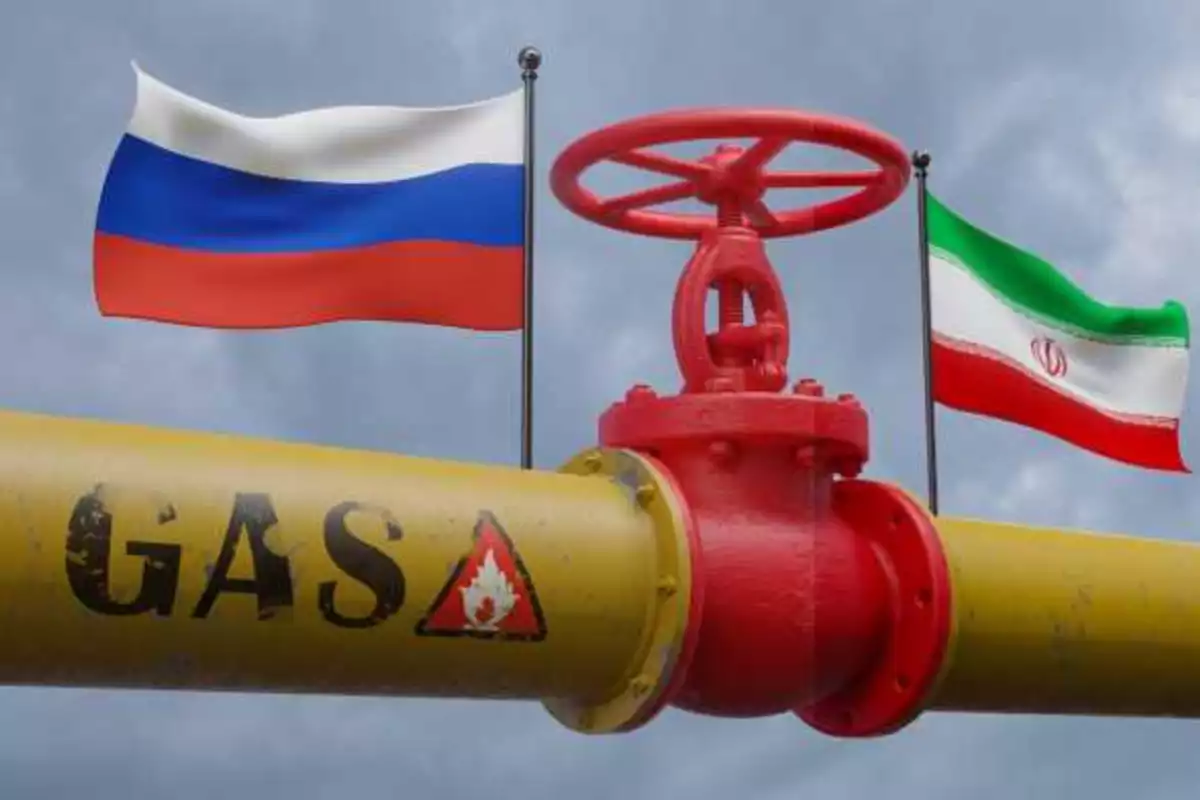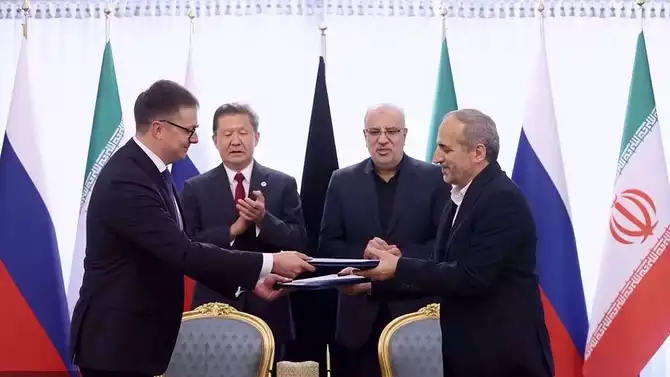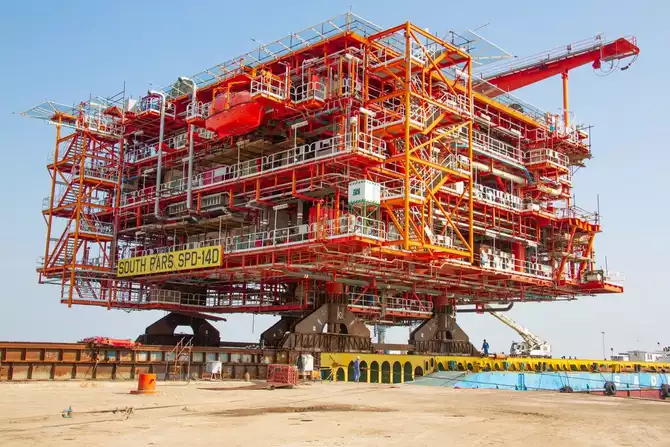
Photo credit: russiaspivottoasia.com
As Moscow and Tehran edge closer to a breakthrough gas deal, the strategic implications stretch far beyond bilateral ties.
Russia and Iran are entering the final stages of negotiations that could reshape the energy dynamics of Central and South Asia. The upcoming 18th meeting of the Russia-Iran Intergovernmental Commission (IGC), scheduled for April 23-25 in Moscow, is widely expected to result in the formalization of a long-anticipated agreement to supply Russian natural gas to Iran.
This deal, years in the making, reflects more than just energy diplomacy. It is a strategic alignment of two sanctioned powers seeking to recalibrate regional trade routes, diversify export markets, and challenge Western dominance over global energy flows.
A Deal Years in the Making
Intensive preparations for the IGC have been underway for months. March 2025 saw a flurry of high-level meetings between Russian and Iranian officials, including Deputy Energy Minister Roman Marshavin’s talks with Iran’s Oil Ministry and Energy Minister Sergey Tsivilev’s discussions with Iranian Ambassador Kazem Jalali in Moscow. The focus: dismantling remaining barriers to energy cooperation and finalizing the technical, financial, and logistical aspects of a transformative gas supply arrangement.
Though Iran is a gas superpower in its own right-with annual production exceeding 270 bcm-it struggles with geographic and infrastructural mismatches. Gas is primarily produced in the south, while much of the domestic demand is concentrated in the north. This north-south imbalance, coupled with the constraints of U.S.-led sanctions, makes swap operations and regional imports vital to maintaining supply security.
Since 2022, Russia and Iran have been exploring such mechanisms, building on existing petroleum swaps. The signing of a strategic memorandum between Gazprom and the National Iranian Gas Company (NIGC) in June 2024 marked a pivotal step. The subsequent January 2025 visit of Iranian President Masoud Pezeshkian to Moscow confirmed both political will and a preferred route: gas will flow via Azerbaijan.

Gazprom and National Iranian Gas Company officials exchange documents after signing an MoU on Russian gas exports to Iran on June 26, 2024, in Tehran. / Shana.ir
The Azerbaijani Route: Pragmatic, Political
Two pipeline systems-one connecting Russia and Azerbaijan, the other linking Azerbaijan and Iran-stand ready for near-term use. Though initial volumes are expected to be modest (around 2 bcm annually), the infrastructure can be scaled up. President Vladimir Putin has hinted at long-term volumes reaching up to 55 bcm, provided political, financial, and logistical challenges are addressed.
The choice of the Azerbaijani route is as much about geopolitics as it is about engineering. The alternative-via Kazakhstan, Uzbekistan, and Turkmenistan-offers greater capacity and long-term flexibility, but comes with a more complex web of transit negotiations. Nevertheless, the Central Asian route is still on the table and may become vital if larger volumes are considered or if Azerbaijan's corridor faces unforeseen constraints.
For now, the Azerbaijani route provides a reliable starting point. Soviet-era infrastructure-largely intact and easily upgraded-allows for quick deployment. Energy experts suggest initial deliveries may take the form of swap deals, easing Iran’s northern supply constraints while reinforcing its role as a regional energy hub.
The Final Hurdle: Price
One issue remains unresolved: pricing. Negotiators are working to determine the parity between oil and gas calorific values-a standard component of long-term contracts. Yet, given Iran’s lack of calibrated measurement equipment and its unique pricing systems, this has become a sticking point.
Still, the political imperative to move forward appears strong on both sides. Iran’s ambition to become a regional gas hub-already evident in its swap operations with Turkmenistan, Turkey, and Iraq-requires it to embrace international pricing norms. Russia, for its part, sees in this deal not just a market, but a gateway.
Gas Diplomacy in Motion: The Larger Picture
The deal signals a broader transformation. If expanded beyond initial volumes, Russia-Iran gas cooperation could evolve into a regional megaproject. The emerging vision: a transcontinental gas network connecting Russian resources, Iranian transit, Central Asian reserves, and South Asian markets.
Such a system could link:
• Russian gas supplies via Azerbaijan to Iran,
• Iran’s internal north-south pipeline network or swap-based systems,
• The long-stalled Iran-Pakistan pipeline (IP/MIR),
• The Pakistan Stream pipeline, supported by Russia,
• The Turkmenistan-Afghanistan-Pakistan-India (TAPI) pipeline,
• And a potential Central Asian route for Russian gas to Iran via Kazakhstan and Turkmenistan.
If realized, this “Asian Gas Ring” could serve massive consumer markets-India, Pakistan, Iraq, Türkiye-and ease internal supply constraints in Central Asia, allowing those states to meet export commitments to China through the Central Asia-China gas pipeline system.
The resource base is formidable: Russia’s Unified Gas Supply System, Iran’s South Pars field, and Turkmenistan’s Galkynysh field. Importantly, the network’s radial design would reduce the risk of disruptions caused by outages at any single production site.

Photo credit: shana.ir
Strategic Horizons-and Obstacles
Despite its promise, the project faces formidable challenges. Capital expenditures would be high. Sanctions continue to complicate financing and equipment procurement. Regional instability, especially in Pakistan and Afghanistan, could stall construction. And while the Indian market is alluring, routing pipelines through volatile territory remains a political minefield.
Even liquefied natural gas (LNG)-a seemingly flexible alternative-faces hurdles. Iran has yet to complete any of its five previously announced LNG terminals. The most advanced, Iran LNG in Tombak, may launch a mid-scale plant by 2026, but lacks tanker fleets and financing. Russian involvement is unclear, although Gazprom has relevant experience and a 2022 MoU with NIOC that includes LNG cooperation.
Meanwhile, alternative projects like TAPI and Pakistan Stream remain delayed. But if linked via the IP pipeline or swap mechanisms through Iran, even partial implementation could unlock new routes to market.
A Modest Start, a Grand Vision
The initial 2 bcm/year gas supply from Russia to Iran may appear modest. But symbolically and strategically, it marks the beginning of a potentially transformative shift. Beyond energy, it strengthens Russia-Iran political alignment and opens the door to broader cooperation in infrastructure and technology development.
As Sergey Mitrakhovich, an expert at the National Energy Security Fund, notes: "This is not just about gas. It’s about integration, positioning, and long-term leverage in a fast-evolving Eurasian energy landscape."
If the pieces fall into place, the coming decade may witness the rise of a Eurasian energy corridor rivaling anything the West has attempted-one built not from necessity alone, but from deliberate strategic convergence.
Share on social media